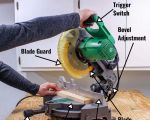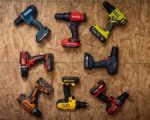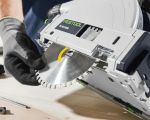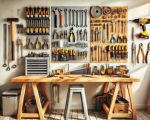- 1-Planning-Your-Workbench-Project
- 2-Selecting-Materials-and-Tools
- 3-Step-by-Step-Workbench-Construction-Process
- 4-Tips-for-Enhancing-Workbench-Functionality
- 5-Real-Life-Workbench-Building-Experience
- 6-Finding-the-Right-Tools-at-ToolNest
1. Planning Your Workbench Project: The Foundation of Success
Before diving into building your workbench from scratch, thorough planning is essential. Understanding the purpose of your workbench—whether for woodworking, metalwork, or general DIY tasks—will influence its size, strength, and features. Start by assessing your workspace and determining how much room you can dedicate to the bench.
Consider the types of projects you will tackle and what tools or accessories you want close at hand. Sketching a basic design and listing needed components will help streamline the building process and ensure your workbench meets your specific needs.
1.1 Defining Your Workbench’s Purpose
Workbenches can vary widely depending on intended use. For example, a woodworking bench typically requires a sturdy surface and clamps, while a mechanic’s bench may need storage for tools and parts. Clarifying your goals early saves time and effort.
1.2 Measuring Your Space and Budget
Take precise measurements of your workspace and set a realistic budget. Materials and tools vary in cost, so balancing quality and affordability is key.
2. Selecting Materials and Tools for Building Your Workbench
Choosing the right materials ensures durability and functionality. Common options include hardwoods like maple or oak for the tabletop due to their toughness, and pine or fir for the frame to keep costs down.
When selecting tools, focus on essentials such as a circular saw, drill, measuring tape, clamps, and a level. Using quality tools makes the building process more efficient and enjoyable.
2.1 Wood Choices and Considerations
Hardwood tops withstand heavy use but come at a higher price. Softwoods are easier to work with but may dent or wear faster. Combining materials can optimize cost and performance.
2.2 Essential Tools for Construction
A reliable drill with screwdriver bits, a saw suitable for cutting lumber, and clamps to hold pieces during assembly are must-haves. You can find recommended tools suited for workbench building at ToolNest.
3. Step-by-Step Workbench Construction Process
Building a workbench from scratch involves clear, sequential steps to achieve a sturdy result. Follow these stages to create your ideal workspace:
3.1 Constructing the Frame
Begin by cutting the frame components to size. Assemble the legs and supports using wood screws or bolts, ensuring the frame is square and stable. Reinforcing corners with brackets adds extra strength.
3.2 Building the Work Surface
Next, prepare the tabletop by joining planks edge to edge. Sand the surface smoothly and attach it securely to the frame. Consider adding a protective finish or sealant for durability.
3.3 Adding Functional Features
Integrate shelves, drawers, or pegboards depending on your needs. These additions improve organization and accessibility, making your bench a true productivity hub.
4. Tips for Enhancing Workbench Functionality and Longevity
Beyond the basics, consider these enhancements to optimize your workbench:
4.1 Adjustable Height Options
Building adjustable legs or adding removable risers can tailor the bench height for different tasks or users, improving ergonomics.
4.2 Incorporating Vices and Clamps
Installing a bench vice or built-in clamps expands your ability to secure workpieces safely during projects.
4.3 Easy Maintenance Practices
Regularly cleaning and refinishing your work surface protects against damage. Using a replaceable top layer is another practical idea to extend bench life.
5. Real-Life Workbench Building Experience: A Story of DIY Success
John, an avid DIYer, recently shared how building his own workbench transformed his home workshop. Starting with basic woodworking knowledge, he designed a bench tailored to his small garage. John chose pine for the frame and a hardwood top for durability, balancing budget and quality.
His biggest challenge was ensuring stability, which he overcame by reinforcing leg joints and adding cross braces. The final result provided a spacious, sturdy surface perfect for his woodworking projects. John credits detailed planning and tool selection from ToolNest for his success.
5.1 Lessons from John’s Project
His experience highlights the importance of patience, precision, and investing in good tools. For beginners, he recommends starting with simple designs and gradually adding features.
6. Finding the Right Tools and Supplies at ToolNest
ToolNest offers a comprehensive selection of woodworking tools and materials ideal for building workbenches. Whether you need saws, drills, fasteners, or safety gear, the platform provides expert advice and quality products tailored for DIY enthusiasts.
Using ToolNest ensures you have reliable equipment, making your workbench project smoother and more enjoyable.
6.1 Tool Recommendations for Beginners
For those new to woodworking, ToolNest suggests versatile, easy-to-use tools like cordless drills with adjustable torque, combination squares, and quick-release clamps to facilitate assembly.
6.2 Support and Community
ToolNest also connects you with user reviews, tutorials, and community forums where builders share tips, inspiration, and problem-solving strategies.









